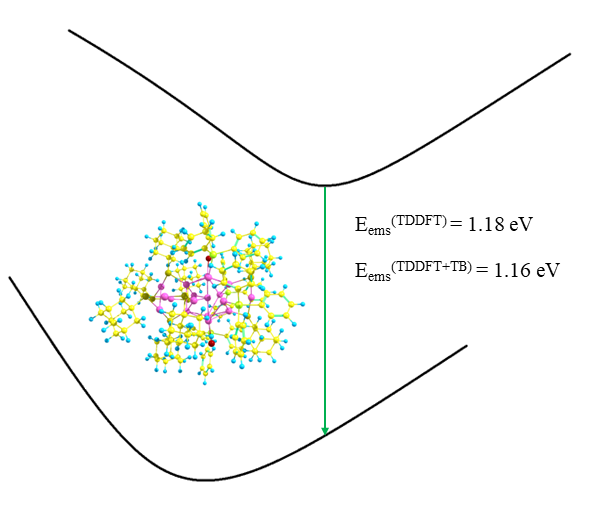Analytical Excited State Gradients for Time-dependent Density-functional Theory plus Tight-binding (TDDFT+TB)
Excited states play a vital role in photochemical mechanisms, and therefore, understanding these states directly influences the ability to find new highly luminescent materials, photocatalysts, fluorescent probes, photovoltaic devices, and more. Unfortunately, modelling excited state potential energy surfaces becomes substantially computationally expensive in large molecular systems and nanoclusters. To remedy this issue, time-dependent density-functional theory plus tight binding (TDDFT+TB) was implemented into ADF in 2016. Inspired by the sTDA and sTDDFT methods by Stefan Grimme, TDDFT+TB makes use of a monopole approximation rather than the coupling matrix integrals in linear response TDDFT to drastically cut the cost of calculating excited state energies.
For photoluminescent mechanisms, however, the method must go beyond energy calculations. In a recent paper, the researchers utilized the Z-vector method to derive the analytical gradients for TDDFT+TB and implement the code into the ADF engine in AMS for the 2023 release. The authors tested a total of 60 different chemical systems consisting of 9 diatomic molecules, 26 small organic molecules, one bare gold nanocluster core, 10 ligand protected noble metal nanoclusters, and 14 chromophores. Through these tests they found that this method achieves a similar emission energy and excited state geometry for larger molecular systems at roughly a third of the cost compared to TDDFT. The analytical gradients of TDDFT+TB therefore serve as a useful tool to reduce the computational cost of excited state geometry optimizations while retaining the accuracy of TDDFT.

See also this webinar.
Learn more about applications of spectroscopy with AMS.
Shana Havenridge, Robert Rüger and Christine M. Aikens, Analytical Excited State Gradients for Time-dependent Density-functional Theory plus Tight-binding (TDDFT+TB), J. Chem. Phys. 2023, 158. Accepted.
Key conceptsADF spectroscopy